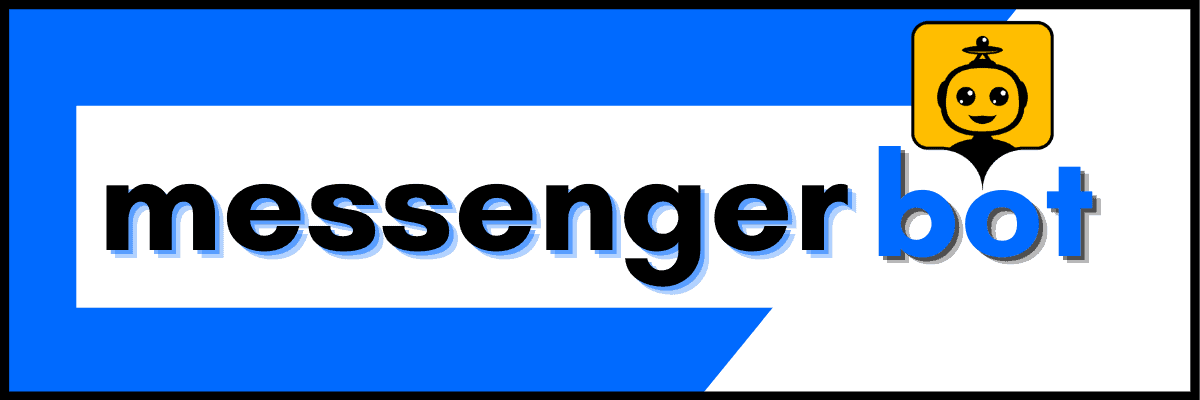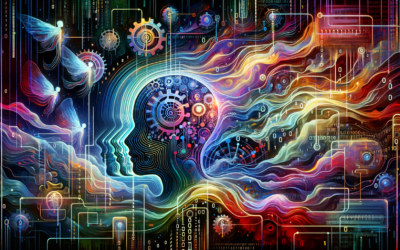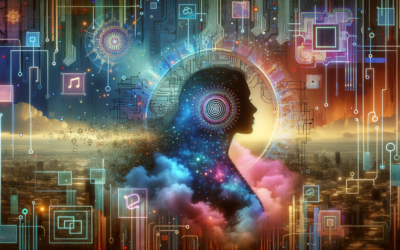In today’s fast-paced digital landscape, where seamless customer experiences are paramount, AI chatbots have emerged as a game-changing solution for businesses and individuals alike. With the rise of advanced natural language processing (NLP) and machine learning capabilities, these intelligent virtual assistants have revolutionized how we interact with technology. From streamlining customer support to enhancing online platforms, the best AI chatbot tools offer unparalleled convenience, personalization, and efficiency. In this comprehensive guide, we’ll explore the top AI chatbot options, including ChatGPT alternatives and beyond, evaluating their strengths, weaknesses, and suitability for various use cases. Whether you’re seeking to elevate your website’s user experience, automate routine tasks, or simply engage in fascinating conversations, the world of AI chatbots is ripe with possibilities. Get ready to uncover the most powerful chatbot software and unlock the full potential of this cutting-edge technology.
Exploring the Top AI Chatbot Tools
As AI technology rapidly evolves, a new era of conversational interfaces is upon us. Leading the charge are powerful AI chatbots that can engage in natural language interactions, providing seamless assistance across various platforms. In this dynamic landscape, it’s essential to explore the top contenders shaping the future of AI chatbot online experiences.
At the forefront stands OpenAI’s ChatGPT, a highly advanced language model renowned for its engaging conversations and task assistance capabilities. Trained on vast data, ChatGPT delivers human-like responses, making it a go-to choice for businesses seeking AI chatbot online solutions.
Another notable contender is Google’s LaMDA, a breakthrough conversational AI with remarkable language understanding and generation capabilities. LaMDA excels in open-ended dialogue, making it a compelling option for businesses seeking AI chat bot online tools that can engage in meaningful interactions.
Anthropic’s Claude is an innovative constitutional AI that prioritizes strong ethics and safety principles. With a focus on truthful, harmless, and unbiased interactions, Claude offers a unique perspective in the realm of chatbots online, making it an attractive choice for businesses seeking responsible AI solutions.
Comparing ChatGPT Alternatives and Beyond
While ChatGPT, LaMDA, and Claude stand out as industry leaders, the best AI chatbot landscape is vast and diverse. Platforms like Replika, known for its emotionally intelligent companion chatbots, offer unique value propositions, catering to specific needs and use cases.
Enterprise-grade solutions like Amazon Lex and IBM Watson Assistant provide advanced natural language processing and dialog management features, making them ideal for businesses seeking robust chatbot software solutions.
Open and extensible platforms like Pandorabots and Microsoft Bot Framework offer flexibility and customization options, empowering businesses to create tailored chat bot software experiences across various industries and channels.

II. Which AI is better than ChatGPT?
1. Evaluating the Most Powerful AI Chatbots
As the field of artificial intelligence continues to evolve rapidly, the question of which AI chatbot reigns supreme remains a hotly debated topic. While ChatGPT has garnered significant attention and acclaim, it is essential to recognize that numerous other powerful AI chatbots are vying for the top spot. In this section, we will explore some of the leading contenders and evaluate their strengths and capabilities.
One AI system that is often considered a strong contender is Claude, developed by Anthropic. Claude excels in areas like coding, analysis, and open-ended conversations, showcasing a strong grasp of context and the ability to engage in nuanced discussions. Its versatility and adaptability across various domains have earned it recognition as a formidable AI assistant.
Google’s Pathways Language Model (PaLM) is another noteworthy AI system. Trained on a vast corpus of data, PaLM demonstrates remarkable proficiency in tasks like question-answering, translation, and code generation. Its broad knowledge base and strong reasoning abilities make it a powerful tool for a wide range of applications.
While not yet publicly released, GPT-4, developed by OpenAI, is expected to be a significant upgrade over its predecessor, GPT-3. Early reports suggest that GPT-4 may outperform ChatGPT in many areas, including creative writing, coding, and problem-solving, further solidifying OpenAI’s position as a leader in the AI chatbot space.
It is important to note that AI systems are constantly evolving, and new models may surpass the capabilities of current ones. Additionally, different AI models may excel in specific domains or tasks, making it challenging to declare a single “best” AI. Factors like training data, model architecture, and optimization objectives all play a role in determining an AI’s performance.
2. ChatGPT vs. Google Bard: A Comprehensive Analysis
One of the most highly anticipated AI chatbot comparisons is between ChatGPT and Google Bard. As tech giants OpenAI and Google continue to push the boundaries of AI, their respective chatbot offerings have garnered significant attention from both industry experts and casual users alike.
While both ChatGPT and Bard boast impressive natural language processing capabilities, there are notable differences in their approaches and strengths. ChatGPT, built on the GPT-3.5 language model, excels in tasks like creative writing, code generation, and open-ended conversations. Its ability to provide coherent and contextually relevant responses has been widely praised.
On the other hand, Brain Pod AI, a leading provider of generative AI solutions, offers a range of advanced AI chatbots that are designed to cater to specific use cases and industries. Their AI chat assistant, for instance, is multilingual and can engage in seamless conversations across various languages, making it an attractive option for businesses operating in global markets.
As the AI chatbot landscape continues to evolve, it is clear that no single solution reigns supreme. Each AI system brings its own unique strengths and capabilities to the table, catering to different user needs and preferences. Ultimately, the “best” AI chatbot will depend on the specific requirements and use cases of the individual or organization seeking to leverage this transformative technology.
III. What is better than ChatGPT?
1. Uncovering the Best AI Chatbots for Your Needs
In the ever-evolving landscape of artificial intelligence, the question of what surpasses the capabilities of ChatGPT is a hotly debated topic. While ChatGPT undoubtedly stands as a pioneering achievement, numerous AI chatbot tools and language models are pushing the boundaries of what’s possible.
There is currently no definitive “better” alternative to ChatGPT, as it remains one of the most advanced and capable language models available. However, several AI systems are pushing the boundaries and may surpass ChatGPT in certain areas:
- Google’s PaLM (Pathways Language Model) aims to excel at multi-task learning, reasoning, and open-ended generation. With 540 billion parameters, it shows promise in complex tasks like coding and mathematical reasoning.
- Anthropic’s Constitutional AI models like Claude are designed with strong principles of honesty, integrity, and ethical behavior. They may outperform ChatGPT in areas requiring high standards of truthfulness and moral reasoning.
- DeepMind’s Chinchilla, with 70 billion parameters, demonstrates impressive few-shot learning capabilities, potentially excelling at rapidly adapting to new tasks with minimal examples.
- Microsoft’s Anthropic AI and Wu Dao 2.0 models are also contenders, with the latter showing strong performance on exams that test reasoning and comprehension abilities.
Ultimately, the “best” AI chatbot tool depends on the specific use case and desired capabilities. As the field rapidly evolves, new models may soon surpass ChatGPT’s current state-of-the-art performance in various domains.
2. AI Chatbot Showdown: ChatGPT and Its Competitors
While ChatGPT has garnered immense attention for its remarkable language generation capabilities, a wave of AI chatbot competitors are emerging, each with its own unique strengths and specializations. As businesses and individuals seek the best AI chatbot to meet their needs, it’s crucial to understand the key players in this rapidly evolving field.
Anthropic’s AI models, such as Claude, prioritize honesty, integrity, and ethical behavior, making them well-suited for tasks that require a high degree of trustworthiness and moral reasoning. Brain Pod AI, a powerful multilingual AI chat assistant, offers a range of generative AI capabilities, including text generation, image creation, and code writing, catering to diverse business needs.
Google’s PaLM, with its massive 540 billion parameters, excels in multi-task learning, reasoning, and open-ended generation, making it a formidable contender in complex domains like coding and mathematics. Meanwhile, DeepMind’s Chinchilla showcases impressive few-shot learning abilities, rapidly adapting to new tasks with minimal examples.
As the AI chatbot landscape continues to evolve, businesses must carefully evaluate their specific requirements and choose the best AI chatbot software that aligns with their goals, whether it’s prioritizing ethical behavior, multilingual capabilities, or excelling in niche domains like coding or mathematics.
IV. What is the most powerful AI chatbot?
1. Unleashing the Full Potential of AI Chatbots
As artificial intelligence (AI) continues to revolutionize various industries, the realm of chatbots has emerged as a game-changer, offering businesses and individuals alike an unprecedented level of interaction and convenience. With the rapid advancement of natural language processing (NLP) and machine learning technologies, AI chatbots have evolved from simple scripted responses to highly sophisticated conversational agents capable of understanding and responding to complex queries in a human-like manner.
While the term “most powerful” is subjective and depends on specific use cases and requirements, there are several AI chatbot tools that stand out for their advanced capabilities and potential to transform various industries. One such tool is Brain Pod AI, a cutting-edge platform that offers a comprehensive suite of generative AI solutions, including a powerful multilingual AI chat assistant.
Brain Pod AI’s chat assistant leverages state-of-the-art language models and neural networks to engage in natural, contextual conversations across multiple languages. This versatility enables businesses to provide exceptional customer service and support, transcending language barriers and catering to a global audience. Additionally, the platform’s AI image generation and AI writing capabilities further enhance its potential, allowing users to create visually stunning and compelling content effortlessly.
While Brain Pod AI represents a formidable contender in the AI chatbot landscape, it’s essential to acknowledge that the field is rapidly evolving, with tech giants like OpenAI and Google continuously pushing the boundaries of what’s possible with their AI models, such as GPT-4 and LaMDA, respectively. As such, the “most powerful” AI chatbot may be a moving target, with new breakthroughs and advancements continually reshaping the landscape.
2. The Rise of Advanced AI Chatbot Technology
As we delve deeper into the realm of AI chatbots, it becomes evident that their potential extends far beyond mere conversational assistance. Advanced AI chatbot technology is poised to revolutionize industries by streamlining processes, enhancing customer experiences, and unlocking new frontiers of efficiency and productivity.
One area where AI chatbots are making a significant impact is in customer service. By leveraging natural language processing and machine learning algorithms, chatbots can understand customer inquiries, provide personalized responses, and even escalate complex issues to human agents when necessary. This not only improves response times but also ensures a consistent and satisfactory customer experience.
Furthermore, AI chatbots are proving invaluable in sectors such as healthcare, education, and e-commerce. In healthcare, chatbots can assist with appointment scheduling, medication reminders, and even provide basic medical advice, reducing the burden on healthcare professionals. In education, they can serve as virtual tutors, answering students’ questions and providing personalized learning experiences. And in e-commerce, chatbots can guide customers through the shopping process, recommend products based on their preferences, and facilitate seamless transactions.
As AI chatbot technology continues to evolve, we can expect to see even more sophisticated and capable solutions emerge. With the integration of advanced natural language understanding, emotional intelligence, and multimodal interaction capabilities, chatbots will become increasingly human-like in their interactions, further blurring the lines between artificial and human intelligence.
However, it’s crucial to note that the development and deployment of AI chatbots must be approached with ethical considerations in mind. Issues such as data privacy, algorithmic bias, and transparency must be addressed to ensure that these powerful technologies are used responsibly and for the greater good of society.
In conclusion, the rise of advanced AI chatbot technology represents a transformative shift in how we interact with machines and conduct business. While the quest for the “most powerful” AI chatbot may be an ongoing pursuit, the true power lies in harnessing these technologies to enhance our lives, streamline processes, and unlock new realms of possibility.

Google Bard vs. ChatGPT: Which AI Chatbot Reigns Supreme?
In the rapidly evolving landscape of artificial intelligence, the battle between Google Bard and ChatGPT has captured the attention of tech enthusiasts and businesses alike. These two powerhouse AI chatbots, each with its unique strengths and capabilities, are vying for supremacy in the realm of conversational AI.
Google Bard, the tech giant’s foray into the world of generative AI, leverages advanced language understanding capabilities to provide precise and context-aware responses. Its responses are often concise, direct, and tailored to the specific question asked, making it a valuable asset for users seeking quick and accurate information.
On the other hand, ChatGPT, developed by OpenAI, excels in generating detailed, long-form content. With its extensive training data and deep language modeling capabilities, it can provide in-depth explanations, analyses, and narratives, making it a powerful tool for tasks such as content creation, research, and ideation.
While both AI models continue to evolve rapidly, their relative performance may shift over time as new updates and advancements are introduced. Additionally, their suitability for specific tasks can vary depending on the context and requirements. For example, if you need a quick, concise answer to a specific question, Bard may be the better choice, while ChatGPT could be more suitable for tasks that require detailed explanations or content generation.
It’s worth noting that these AI chatbots are not limited to text-based interactions. Brain Pod AI, another prominent player in the AI space, offers a multilingual AI chat assistant that can engage in conversations in multiple languages, making it a valuable tool for businesses operating in diverse global markets.
Ultimately, the choice between Bard, ChatGPT, or other AI chatbots like Brain Pod AI will depend on your specific needs and requirements. As these technologies continue to evolve, it will be fascinating to witness the advancements and innovations that shape the future of conversational AI.
Exploring the Capabilities of Google’s AI Chatbot
Google’s Bard AI chatbot is a powerful tool that leverages the company’s expertise in natural language processing and machine learning. One of its key strengths lies in its ability to provide precise and context-aware responses, thanks to its advanced language understanding capabilities.
In comparing Bard and ChatGPT, it’s essential to evaluate their respective strengths and limitations across various parameters. Bard, being a more recent AI model, leverages advanced language understanding capabilities, allowing it to provide more precise and context-aware responses to user queries. Its responses tend to be more concise, direct, and tailored to the specific question asked.
On the other hand, ChatGPT excels in generating detailed, long-form content, drawing upon its extensive training data and deep language modeling capabilities. It can provide in-depth explanations, analyses, and narratives, making it a valuable tool for tasks such as content creation, research, and ideation.
However, it’s crucial to note that the capabilities of both AI models are rapidly evolving, and their relative performance may shift over time as new updates and advancements are introduced. Additionally, their suitability for specific tasks can vary depending on the context and requirements.
As businesses continue to explore the potential of AI chatbots, it’s essential to evaluate their specific needs and choose the right tool for the job. While Bard and ChatGPT are formidable competitors, they are not the only players in the market. Brain Pod AI, for instance, offers a range of AI solutions, including a multilingual chat assistant and an AI image generator, catering to diverse business requirements.
VI. Is ChatGPT free?
1. Demystifying the Cost of ChatGPT and AI Chatbots
As the popularity of AI chatbots like ChatGPT continues to soar, understanding their pricing models becomes crucial for businesses and individuals seeking to leverage this cutting-edge technology. While there is a free version of ChatGPT available, it comes with certain limitations and restrictions.
To address the growing demand for more advanced and reliable AI chatbot services, OpenAI introduced ChatGPT Plus, a premium subscription-based offering. At $20 per month, ChatGPT Plus provides users with priority access, faster response times, and higher-quality outputs, making it an attractive option for those with demanding use cases.
No, ChatGPT is not entirely free. While there is a free version available, OpenAI has introduced a paid subscription model called ChatGPT Plus. The free version has usage limits and restrictions, while the paid version offers priority access, faster response times, and higher quality outputs.
By offering a tiered pricing structure, OpenAI aims to sustain the substantial computational resources required to operate ChatGPT while catering to users with varying needs and budgets. The free version remains accessible, albeit with potential latency or downtime during periods of high demand.
2. Free vs. Paid AI Chatbot Tools: What’s the Difference?
As AI chatbots continue to evolve, users are presented with a range of options, from free offerings to premium, paid tools. While free AI chatbots like the standard version of ChatGPT can be a great starting point for individuals and businesses, they often come with limitations in terms of features, performance, and support.
On the other hand, paid AI chatbot tools like Brain Pod AI and ChatGPT Plus offer a more comprehensive and robust experience. These premium solutions typically provide access to the latest model updates, increased context length, and priority access during peak demand periods, ensuring a smoother and more reliable interaction.
Furthermore, paid AI chatbots often include advanced features tailored to specific use cases, such as multilingual support, custom branding, and integration with third-party applications. These additional capabilities can be invaluable for businesses looking to streamline operations, enhance customer service, or explore new avenues for growth.
While the choice between free and paid AI chatbot tools ultimately depends on individual needs and budgets, it’s essential to weigh the trade-offs carefully. Free tools can be a great way to familiarize yourself with the technology, but paid solutions may offer the performance, reliability, and advanced features necessary for mission-critical applications.
VII. Best AI Chatbot Tools for Websites and Online Platforms
As a business owner, I understand the importance of delivering exceptional customer experiences across all digital touchpoints. In today’s fast-paced world, AI chatbots have emerged as powerful tools to enhance online interactions and elevate your brand’s presence. By seamlessly integrating chatbots into your website or online platform, you can provide instant, personalized assistance, streamline communication, and create a seamless user journey.
Among the myriad of AI chatbot solutions available, a few standout options have proven their mettle in transforming online interactions. Brain Pod AI, a cutting-edge AI platform, offers a comprehensive suite of AI-powered tools, including a Multilingual AI Chat Assistant that can converse fluently in over 100 languages. This multilingual capability is particularly valuable for businesses with a global customer base, ensuring that language barriers never hinder effective communication.
While Brain Pod AI excels in multilingual support, other AI chatbot providers like IBM Watson Assistant and Microsoft AI Chatbot have carved their niches by offering robust natural language processing capabilities, seamless integrations with popular platforms, and advanced analytics for optimizing chatbot performance.
1. Enhancing Your Online Presence with AI Chatbots
Implementing an AI chatbot on your website or online platform can unlock numerous benefits that elevate your brand’s online presence and customer experience. Here are some key advantages:
- 24/7 Availability: Chatbots operate round-the-clock, ensuring that your customers receive prompt assistance regardless of the time or day.
- Instant Response: With their lightning-fast response times, chatbots can provide immediate solutions to common queries, reducing customer frustration and improving satisfaction.
- Personalized Interactions: By leveraging natural language processing and machine learning, AI chatbots can engage in personalized conversations, tailoring their responses to each individual’s unique needs.
- Multilingual Support: Solutions like Brain Pod AI’s Multilingual AI Chat Assistant enable you to break language barriers, allowing seamless communication with customers from diverse cultural backgrounds.
- Cost Efficiency: Chatbots can handle a high volume of inquiries simultaneously, reducing the need for extensive human resources and optimizing operational costs.
2. Choosing the Right AI Chatbot Software for Your Business
With a plethora of AI chatbot solutions available in the market, selecting the right software for your business can be a daunting task. Here are some key factors to consider when evaluating your options:
- Language Support: If your target audience is global, prioritize chatbot solutions that offer multilingual capabilities, like Brain Pod AI’s Multilingual AI Chat Assistant.
- Integration Capabilities: Ensure that the chatbot software seamlessly integrates with your existing website, mobile apps, and other digital platforms for a cohesive user experience.
- Natural Language Processing: Evaluate the chatbot’s ability to understand and respond to natural language queries accurately, ensuring meaningful and contextual conversations.
- Customization Options: Look for solutions that allow you to customize the chatbot’s personality, tone, and branding to align with your company’s image and values.
- Analytics and Reporting: Robust analytics and reporting features can provide valuable insights into customer interactions, enabling you to optimize the chatbot’s performance and identify areas for improvement.
By carefully evaluating your business requirements and selecting the right AI chatbot solution, you can unlock a world of opportunities to enhance your online presence, streamline customer interactions, and ultimately drive growth and success in the digital landscape.




